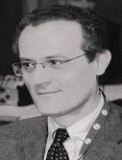HealthManagement, Volume 13 - Issue 1, 2013
The Italian Radiological Society (SIRM) was founded in 1913, and
the first meeting was held in Milan on October 12–14 the same year. SIRM is the
largest medical society in Italy today, and in 2013 will commemorate its
centenary with the slogan ‘The future comes from a solid past’. Approximately
9,600 radiologists are registered with SIRM, including 1900 members under the
age of 35 and 359 radiologists over the age of 70.
The aims of SIRM are to:
- Contribute to the progress of science and radiological imaging
in their physical and biological basis, radiation protection and medical
informatics;
- Promote cultural and scientific updating of members by educational
initiatives and conferences;
- Take measures to guarantee the professionalism of members and
to participate, to the extent applicable, in health planning.
SIRM organises a national congress every two years, courses, conferences and scientific publications, and funds scholarships and research.
SIRM is structured in subspecialty sections for its scientific activities. These sections are dedicated to clinical topics, imaging techniques, or issues like ethics and forensic radiology and also management in radiology.
The Management in Radiology Section: Education and Training in Health Management
The Italian Management in Radiology Section was founded in 1998, and is similar in aims to the Management in Radiology (MIR) section within the European Society of Radiology. The section has a steering committee, including from 2012 an expert in health economics. The section has a website with information on the most important topics in the field of health economics, past and future events, and important documents in English and in Italian, including educational material useful for training and retraining (see http://www.sirm.org/sottositi/management/).
The section’s activity is dedicated to the study of issues related to management in radiology, including human resources for regulatory frameworks, the proposal, development and analysis of guidelines or protocols and all modern aspects of clinical governance. This growing interest is due to the critical economic period that the world and Italian health are experiencing.
SIRM and the Management in Radiology Section prepare documents and guidelines to help radiologists in their activities. The main activities are to:
- Indicate common patterns to adapt to different working
realities;
- Disseminate behavioural and common quality standards at a
national level;
- Provide support to the various professional figures involved;
- And ensure the quality of radiological performances for the
patients.

Figure 1
Various important documents have been realised by the Management in Radiology Section and SIRM (see Figure 1). The most recent, approved by the Italian Ministry of Health and the regions, is the document that deals with dematerialisation of clinical documentation (images and reports) in diagnostic imaging (Ministry of Health 2012). It is an important text for radiologic professional aims, and took three years to produce. The document establishes legal requirements and professional best practice to apply to electronic radiological documents. The text establishes the inseparable relationship between the report and images of any radiological exam. The most important part of the radiological exam is the report, and in this way the turf battle with other medical components or technicians can be avoided or reduced.
Imaging Technologies in Italy Today
Technological innovation is another important issue that must be considered for healthcare spending, because it entails increasing costs. The Italian National Health Service (NHS) has limited resources, a context which requires that any healthcare investment should be assessed on the basis of the appropriateness, efficiency and cost-effectiveness ratio. In 2007 SIRM together with the Italian Association of Neuroradiology (AINR) and the National Union of Radiologists (SNR) started a project to create a National Observatory of Human Resources and Technological Structures of Radiology and Neuroradiology (Ernst & Young 2007). The census covered 86.8 percent of public healthcare structures, and excluded outsourced and private healthcare structures. 10,398 diagnostic devices were registered by the census. If computed radiography, printers, contrast medium injectors and workstations were included there were more than 12,100 devices(see Figure 2).

Figure 2
The equipment census related to high profile devices (CT, MRI and angiographic) and their obsolescence. Between 30 to 35 percent of CT-MRI-Digital Subtraction Angiography) equipment had been installed less than three years before. For low profile equipment, the census showed that 52 percent of traditional Xray equipment was more than seven years old. Forty eight percent of US devices were less than 5 years old and 13 percent were more than 10 years old. In general outpatients departments low profile equipment is more prevalent than high profile ones (Ernst & Young 2007). The conclusion of this evaluation is that in Italy there are sufficiently high level of radiological technologies, while a high percentage of low level devices are obsolete. This assertion is also certified by the Organization for Economic Cooperation and Development (OECD) (OECD 2012a, 2012b). The number of CT and MRI devices per million of population is higher in Italy than in other European countries (see Figure 3).

The Radiology Workforce
Another topic of Radiology management is the number of Radiologists and Radiological technicians needed for healthcare. In Italy in 2000 there were 6,395 radiologists and more than 10,500 technicians. In 2012 there are about 9600 radiologists and 21,600 technicians, an increase in 12 years of 50 percent for radiologists and 102 percent for technicians (see Figure 4). Between 2000 and 2008 there was an increase in the amount of diagnostic imaging exams of 73 percent (Ministry of Health 2011). According to the UK Royal College of Radiologists it is possible to estimate that 10,000 clinical radiologists are necessary for 60 million imaging and radiodiagnostic exams (Royal College of Radiologists 2012). Based on this evaluation it is possible to assert that in Italy in the future the number of radiologists should increase.

Figure 4
Healthcare in Italy: spending Review and Unnecessary Radiological Exams
In Italy the National Health Service (NHS) is composed of institutions and authorities of different institutional level, contributing to the achievement of the objectives of protecting the health of citizens. At the head of the NHS is the Ministry of Health, which operates through specialised authorities. However the national government has the unique role of establishing general guidelines and of monitoring and checking the work of the regions. The management of the NHS is delegated to the 21 regional governments. Moreover in each region the practical management of health facilities, divided into local healthcare authorities and hospital trusts, is entrusted to 284 general managers.
This organisation can lead to large differences in the country. There are many stakeholders and administrators with various competencies and often overlapping responsibilities. The presence of multiple interlocutors hindering dialogue between the parties is one of the most important critical situations for the Italian health profession.
The cost of healthcare in Italy is 75 percent of the total regional budget. Recently the economic crisis has created other problems in the management of health in Italy. The spending review, that during the past year the Italian Government has adopted, has cut resources for healthcare, despite the fact that the funding for the Italian NHS is lower than other OECD countries (OECD 2012c) Clinical radiology is at the centre of modern medicine. Diagnostic imaging has had a tumultuous development in the last years and it is indispensable for many medical activities. The increase in expenses for healthcare is mainly due to imaging exams (45 percent increase compared to other activities) (Hendel 2008). Osteoarticular MRI had the largest increase followed by PET and CT scans, techniques of greater technological complexity and cost. So to reduce healthcare costs it is necessary to cut the number of inappropriate imaging examinations, because their improper use leads to a waste of resources, longer waiting lists and improper exposure to ionising radiation. In Italy every year 40-50 million radiological examinations are performed for outpatients, and the average number of radiological exams per 1000 inhabitants is higher than other European and non-European Countries (see Figure 5) (Department of Health 2012).

Figure 5
What Must be Done?
In 2009 SIRM supported the Health Minister to individuate levels of appropriateness for magnetic resonance imaging (MRI) and computed tomography (CT) exams. Using scientific methods each imaging exam is rated from zero to 10 depending on the level of appropriateness related to the clinical requirements. To reduce inappropriate use of radiological resources, the NHS could cover the costs only of the exams with at least five to six points. For example, CT of the shoulder is correct in the case of traumatic injury but is not useful as the first exam in a cancer lesion (see Figure 6). On the contrary MRI of the shoulder with contrast medium is useful in acute traumatic injury and in cancer lesions, but only in specific cases in suspected inflammatory injury (see Figure 6). But until now the Ministry of Health has not enacted the measure.

Figure 6
For these reasons the evolution of the national healthcare system should move towards a more effective and efficient management approach with regard to patients, with the goal of providing appropriate answers to their needs, based on category and timing, while also taking increasing economic pressures and limitations into account. Therefore, organisational models are needed for healthcare facilities that aim at improving the quality and usability of diagnostic imaging services, guaranteeing a high standard of quality for patients. Clinical management could improve healthcare management. In other words it is necessary to do best what is right and a new responsibility in management can give more quality, effectiveness and appropriateness in diagnostic imaging.
Conclusion
We think that European radiology should cooperate to find common standards trying to influence the European Commission choices. Therefore it will be easier to give support to the European Radiological community and to avoid the risk that radiology could become a commodity. We conclude with the slogan of the last MIR annual scientific meeting and we say that Italian Radiology’s aim is to help to “make imaging relevant in today’s healthcare”.
References:
Ernst & Young, AINR (Italian Association of Neuroradiology), SIRM (Italian Society of Medical Radiology), SNR (National Union of Radiologists), SAGO Health Informatics (2007) National observatory of human resources and technological structures of radiology and reuroradiology. s.l.: Ernst & Young.
Ministry of Health (2011) [Public management and economic activities of the local health authorities and hospitals: statistical yearbook of the national health service 2008]. Available at: www.salute.gov.it/imgs/C_17_pubblicazioni_1488_allegato.pdf [Accessed 23 September 2012]
Ministry of Health (2012) [Guidelines for dematerialisation of images and reports in diagnostic imaging legislation and practice]. Available at: http://www.salute.gov.it/ [Accessed 23 September 2012]
OECD (2012a) "Computed tomography scanners, total" Health: Key Tables from OECD, No. 37. Available at: http://dx.doi.org/10.1787/comptomoscan-table-2012-1-en [Accessed 23 September 2012]
OECD (2012b) "Magnetic resonance imaging units, total" Health: Key Tables from OECD, No. 36. Available at: http://dx.doi.org/10.1787/magresimaging-table-2012-1-en [Accessed 23 September 2012]
OECD (2012c) Briefing note for OECD Health Data 2012: How Does
Italy Compare. Available at: www.oecd.org/italy/BriefingNoteITALY2012.pdf? [Accessed 13 February 2013]
Royal College of Radiologists (2012) Investing in the clinical radiology workforce – the quality and efficiency case. London: Royal College of Radiologists. Available at: www.rcr.ac.uk/docs/radiology/pdf/RCR_CRWorkforce_June2012.pdf [Accessed 23 September 2012]







